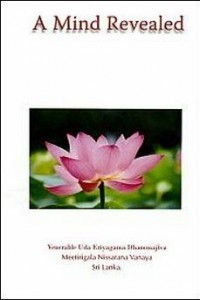
A Mind Revealed contains a collection of discourses of the Dutiyadvayam sutta given by Dhammajiva to the monks and yogis at the Meetirigala Nissarana Vanaya Buddhist monastery in Sri Lanka. This sutta is very comprehensive in its analysis of sensory consciousness, its causality, operation and cessation. Sensory consciousness is a theoretically complex exposition of the Buddhas teachings. Is conceptually challenging and technically subtle to the unenlightened mind. In this book, however, Dhammajiva analyses one’s breath and meditation practice. Download the ebook here:
 A Mind Revealed
A Mind Revealed
What is the Dutiyadvayam sutta?
The “Dutiya(d)vayam Sutta” (sometimes spelled “Dutiyadvayam Sutta”) is a discourse from the Pali Canon, specifically from the Anguttara Nikaya. The name can be broken down as “Dutiya” meaning “second” and “Dvayam” meaning “pair” or “duo”, so the title can be translated as “The Second Set of Two” or “The Second Pair”.
In this sutta, the Buddha speaks about two qualities that are essential for the realization of Nibbana (Nirvana in Sanskrit), which is the ultimate goal in Buddhism. These two qualities are:
- Tranquillity (Samatha): This refers to the calming and concentration of the mind. It’s the practice of focusing the mind on a single object, leading to deep states of concentration and absorption known as jhanas. Tranquillity practices help to steady, compose, unify, and concentrate the mind.
- Insight (Vipassana): This refers to the direct insight into the true nature of reality, precisely the Three Marks of Existence: impermanence (anicca), suffering (dukkha), and non-self (anatta). Insight practices help to see things as they truly are and lead to wisdom and understanding.
The Buddha emphasizes that both tranquillity and insight are necessary for the realization of Nibbana. While one can develop either quality first, ultimately, both need to be cultivated and balanced for full enlightenment.
The sutta underscores the importance of calm and insight in the meditative path, reminding practitioners that both aspects of meditation are crucial for progress on the path to enlightenment.

